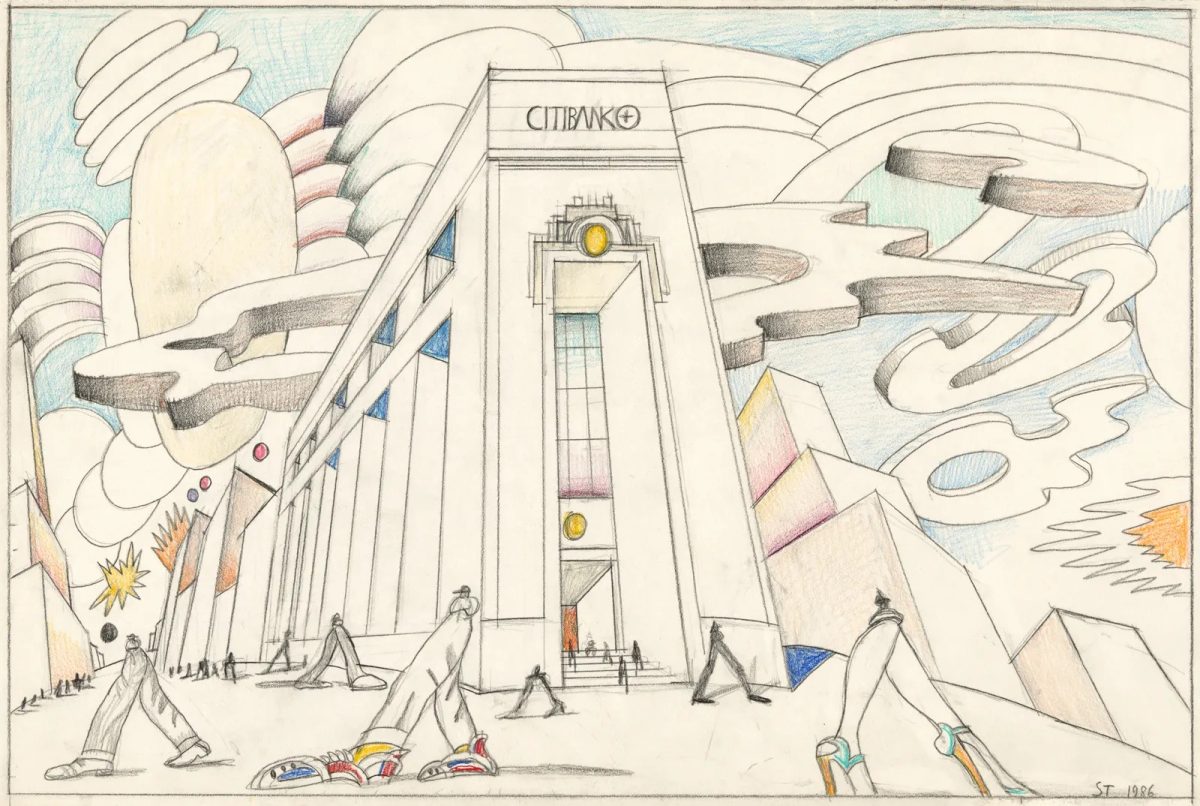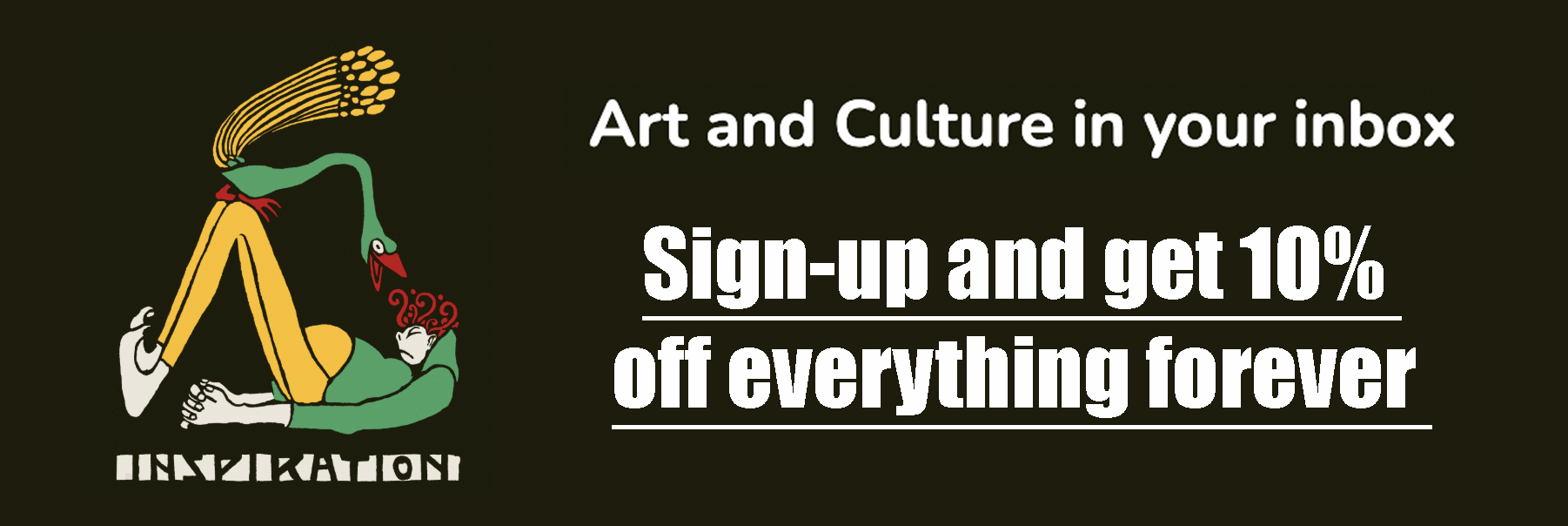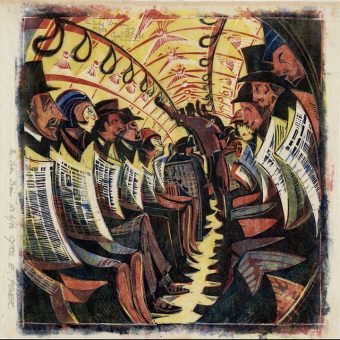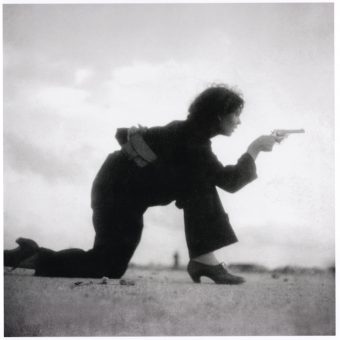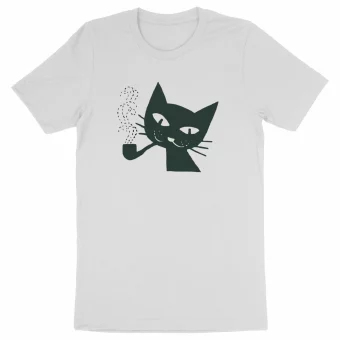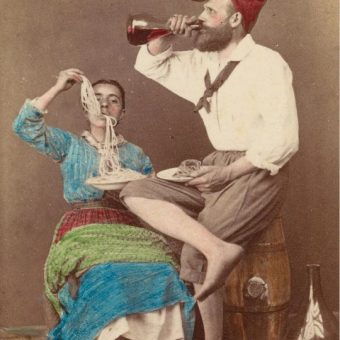“When I make a good image, it enters into your brain like a word you didn’t know and stays there in such a way that you can’t remember how you thought about this topic beforehand.”
– Saul Steinberg
Many of us first encountered Saul Steinberg (American, born Romania, 1914–99) through his hundreds of immersive, florid and witty drawings delivered over six decades for The New Yorker, in which he distilled complex ideas into one picture, dancing on a tightrope between low and high art. He was equally acclaimed for the paintings, prints, collages, and sculptures he exhibited internationally in galleries and museums.
For artist and Omahan Chris Ware, Steinberg’s work changed everything. “After all,” he writes, “Nebraska is more or less traditionally considered the geographic center of the United States — and is actually labeled as such in the real View of the World from 9th Avenue, drawn by Steinberg, which appeared on the March 29, 1976, cover of The New Yorker.” Steinberg was much more and lamented being most famous as “the man who drew that poster”.
From Along the Lines: Selected Drawings by Saul Steinberg at the Art Institute of Chicago and a book of the same name by Chris Ware and Mark Pascale.
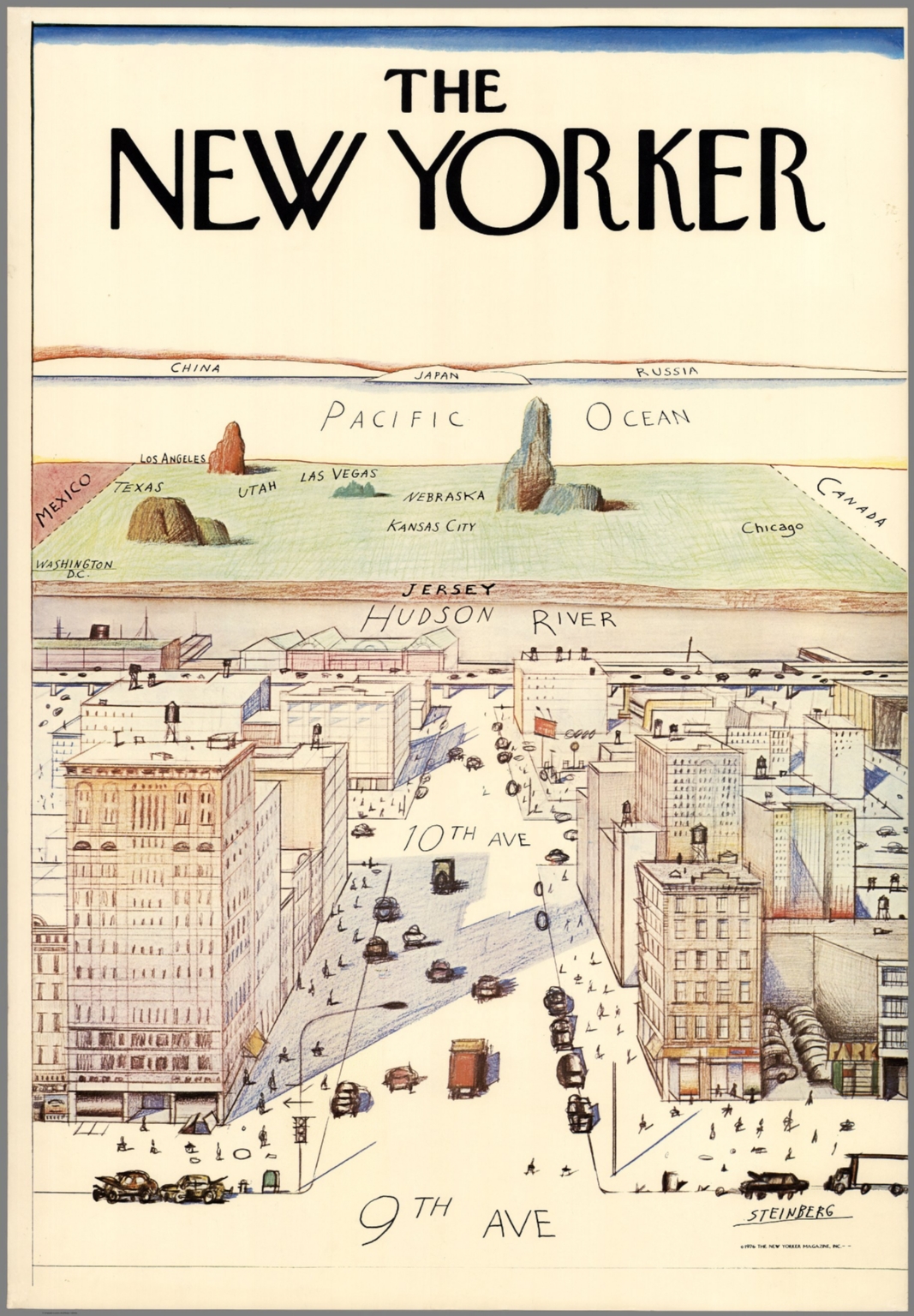
David Rumsey Map Collection, David Rumsey Map Center, Stanford Libraries.
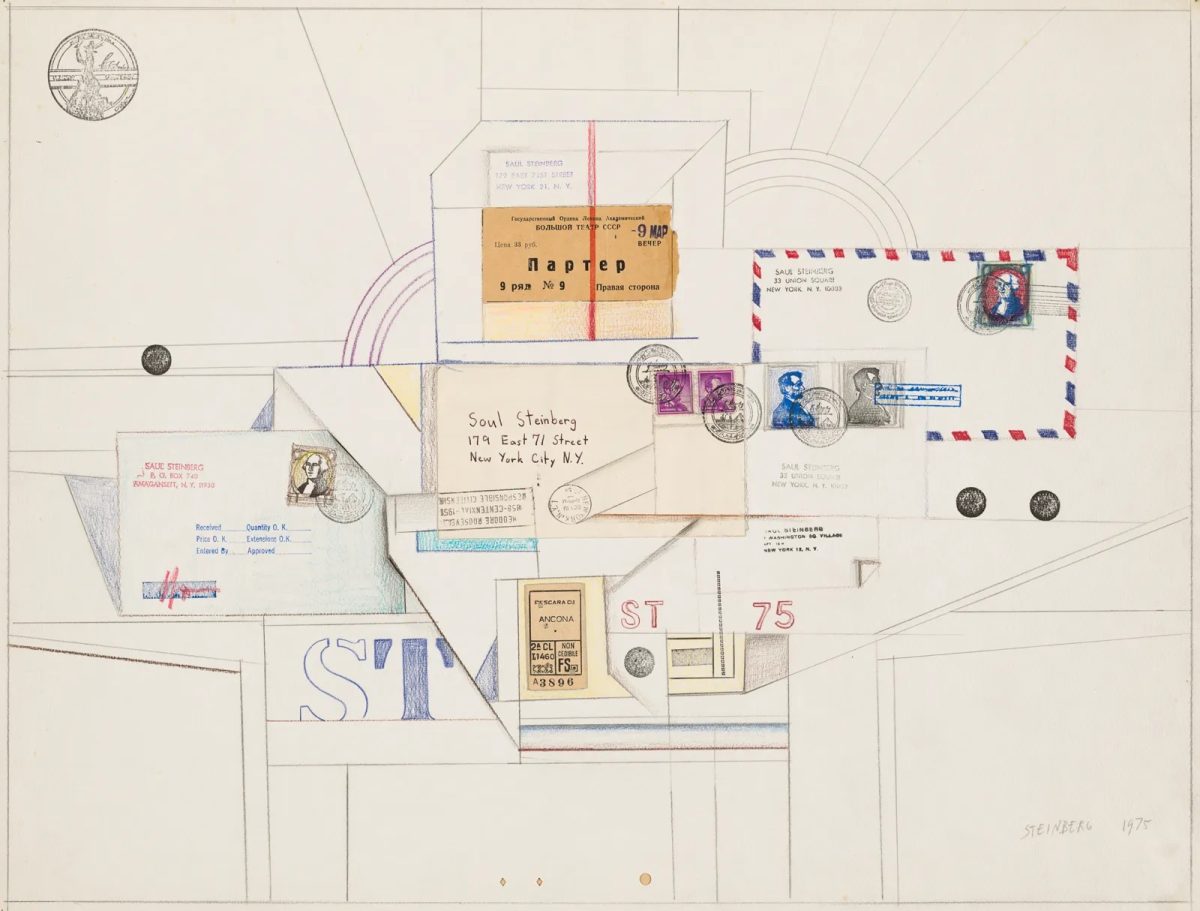
Saul Steinberg- Untitled (Table Still Life with Envelopes), 1975
Steinberg saw himself as “a writer who draws”, and the act of doodling “the brooding of the hand”. For him drawing was “a way of reasoning on paper”.
Throughout his long career, he used drawing to think about the semantics of art, reconfiguring stylistic signs into a new language suited to modern life. He was, as the title of one of his books puts it, the “inspector,” seeing through every false front, every pretense. Sometimes with affection, sometimes with irony, but always with virtuoso mastery, Steinberg peeled back the carefully wrought masks of 20th-century civilization.
His heritage as a Romanian Jew—who experienced firsthand that country’s often virulent anti-Semitism as well as the rise of anti-Semitic laws in a previously cosmopolitan and tolerant Italy—pervaded his take on all things American. Naturally curious, Steinberg was especially interested in how Americans behaved, how they surrounded themselves with luxuries and participated in leisure activities, sometimes without much awareness of the suffering experienced around the world, or even in their own country. The banalities and ubiquities of American culture were frequent subjects of his drawings, themes in which he delighted and from which he kept ironic distance. His work also addressed philosophical questions, still lifes, Hollywood, and identity through masks.
Featuring 54 drawings generously gifted by the Saul Steinberg Foundation in 2013, this exhibition offers a comprehensive survey of the artist’s diverse output. Whether created to stand on their own, for reproduction, or for commercial uses, the drawings in this show afford a new appreciation of Steinberg and his remarkably playful, inventive, and insightful art.
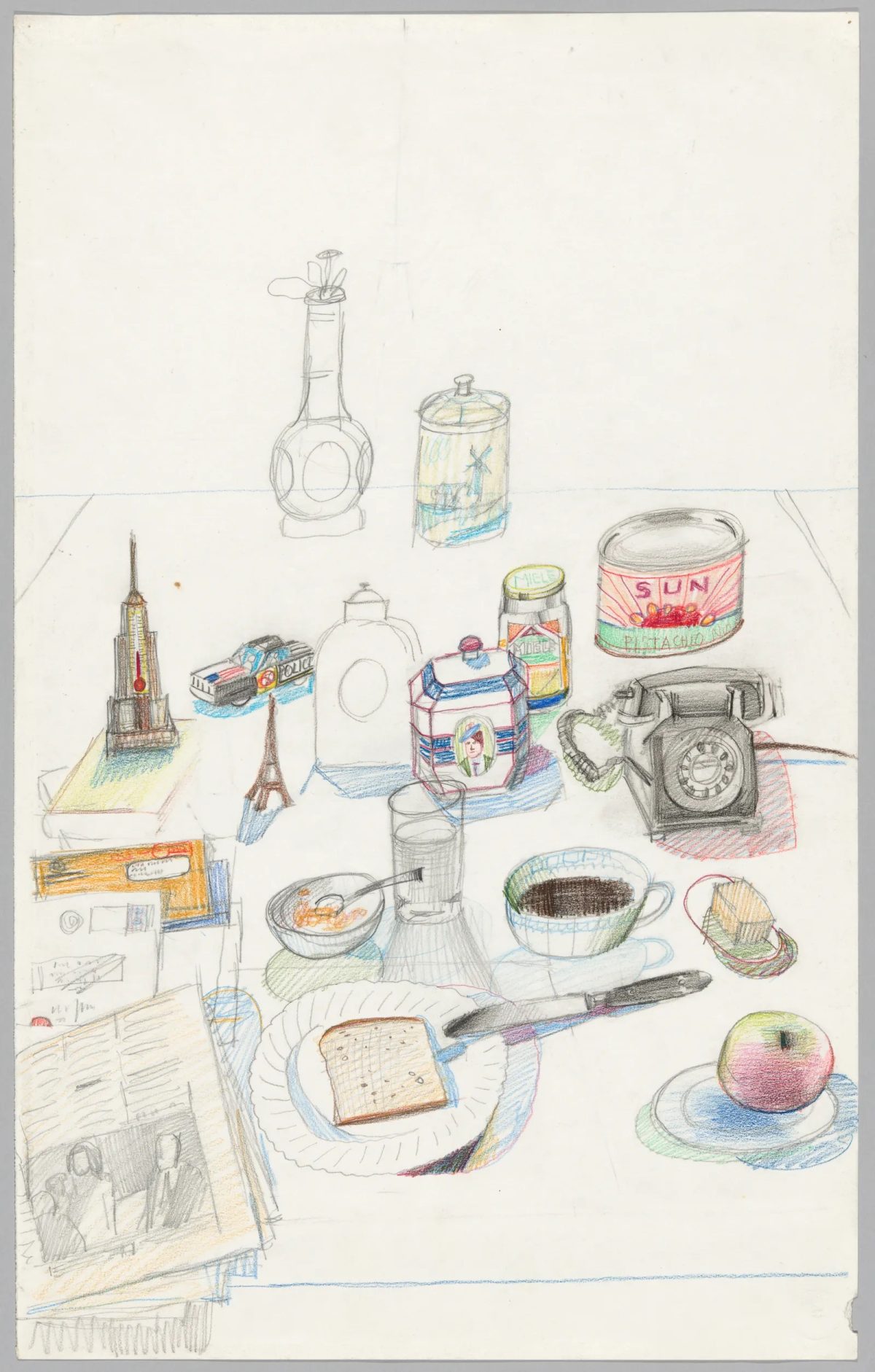
Saul Steinberg- Breakfast Still Life, circa 1974
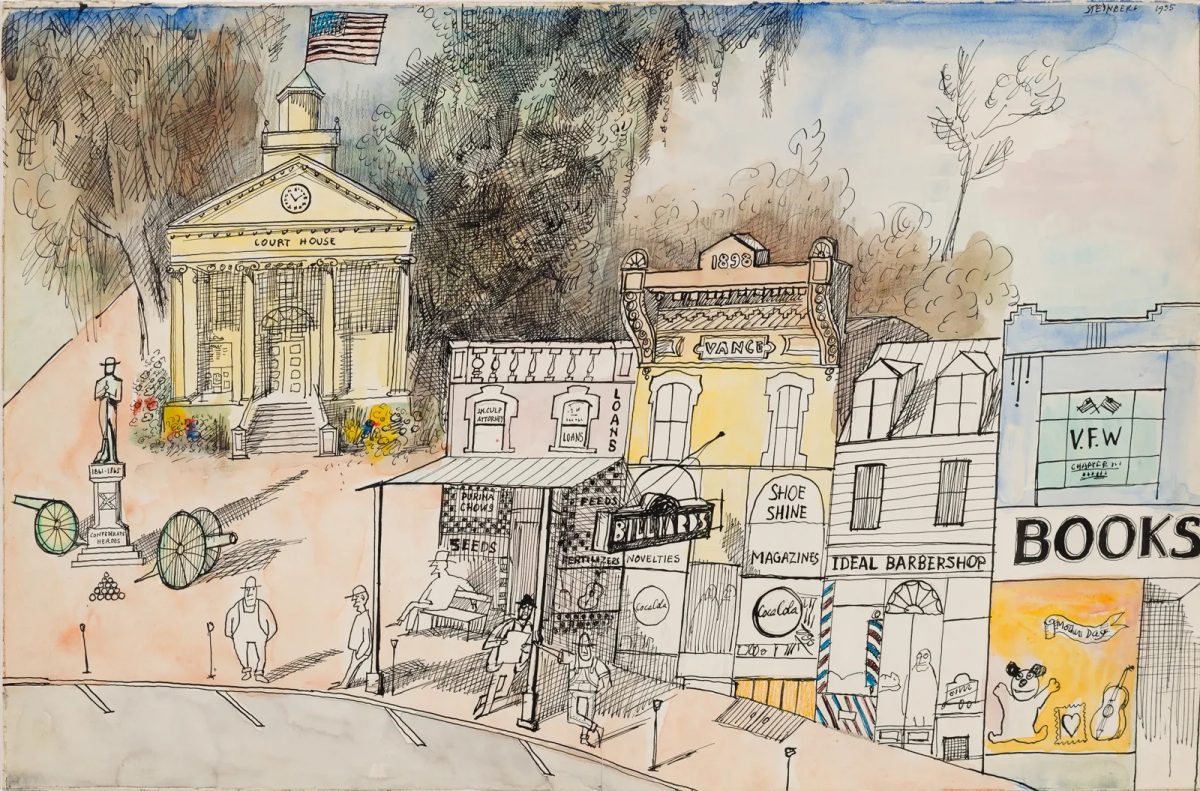
Saul Steinberg- The South, 1955
Born in Romania in 1914, Steinberg studied architecture in Italy, then fled the spread of anti-Semitism and fascism in Europe for America. His slant on the United States was always from the perspective of a newcomer, an immigrant’s view of his strange new home. Though known best for his many New Yorker covers and drawings, Steinberg wasn’t a cartoonist, as were many of the other prominent contributors to that magazine. It’s a testament to his unique place in art history that he was included in the Museum of Modern Art’s pivotal “Fourteen Americans” show in 1946, alongside such modernists as Arshile Gorky and Robert Motherwell.
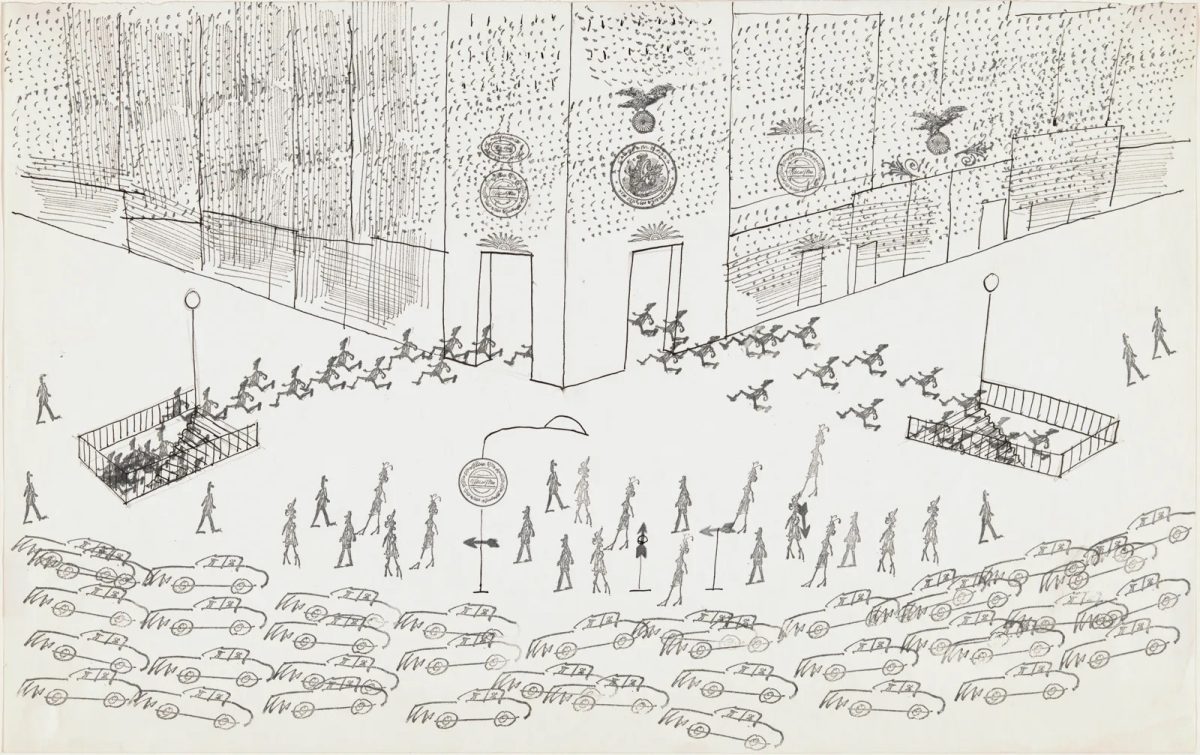
Saul Steinberg- Untitled (Rush Hour), circa 1969
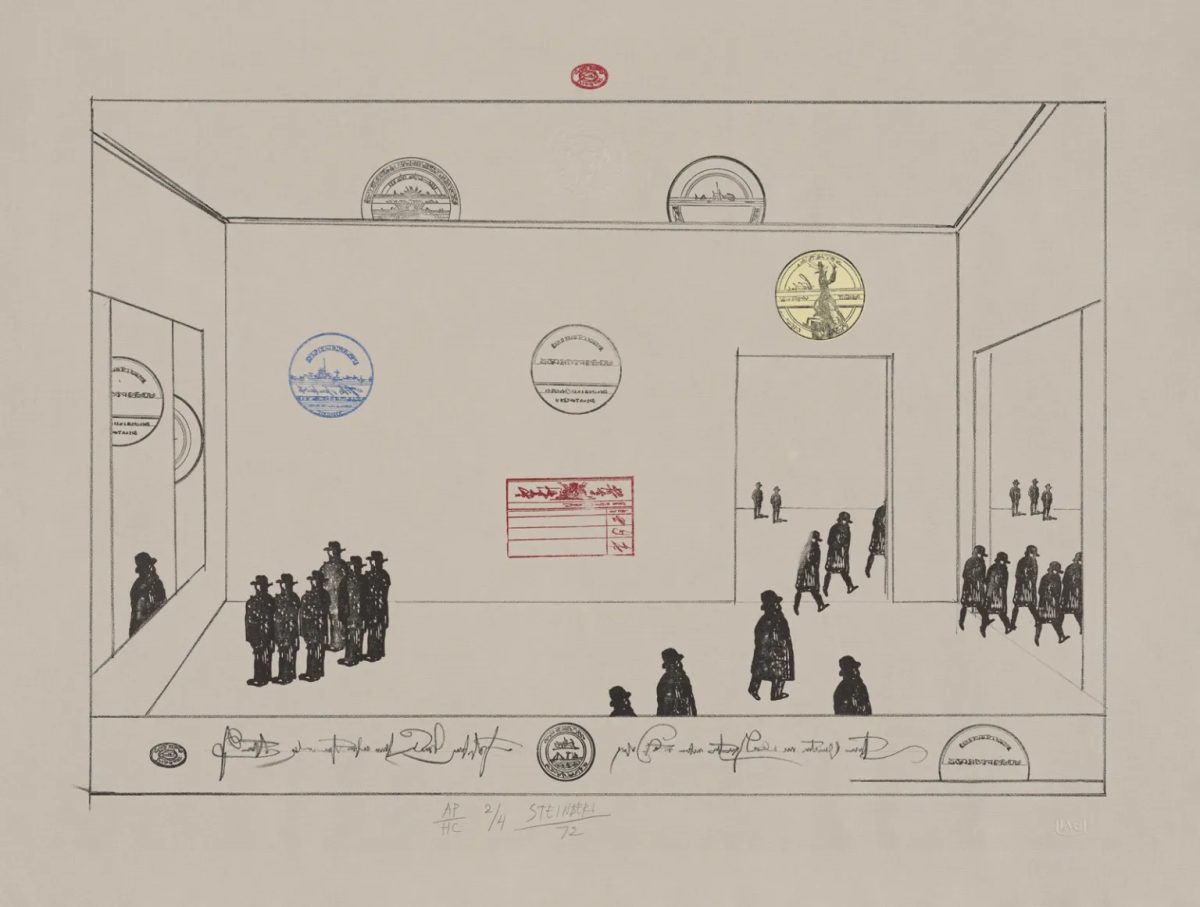
Saul Steinberg- The Museum, 1972;
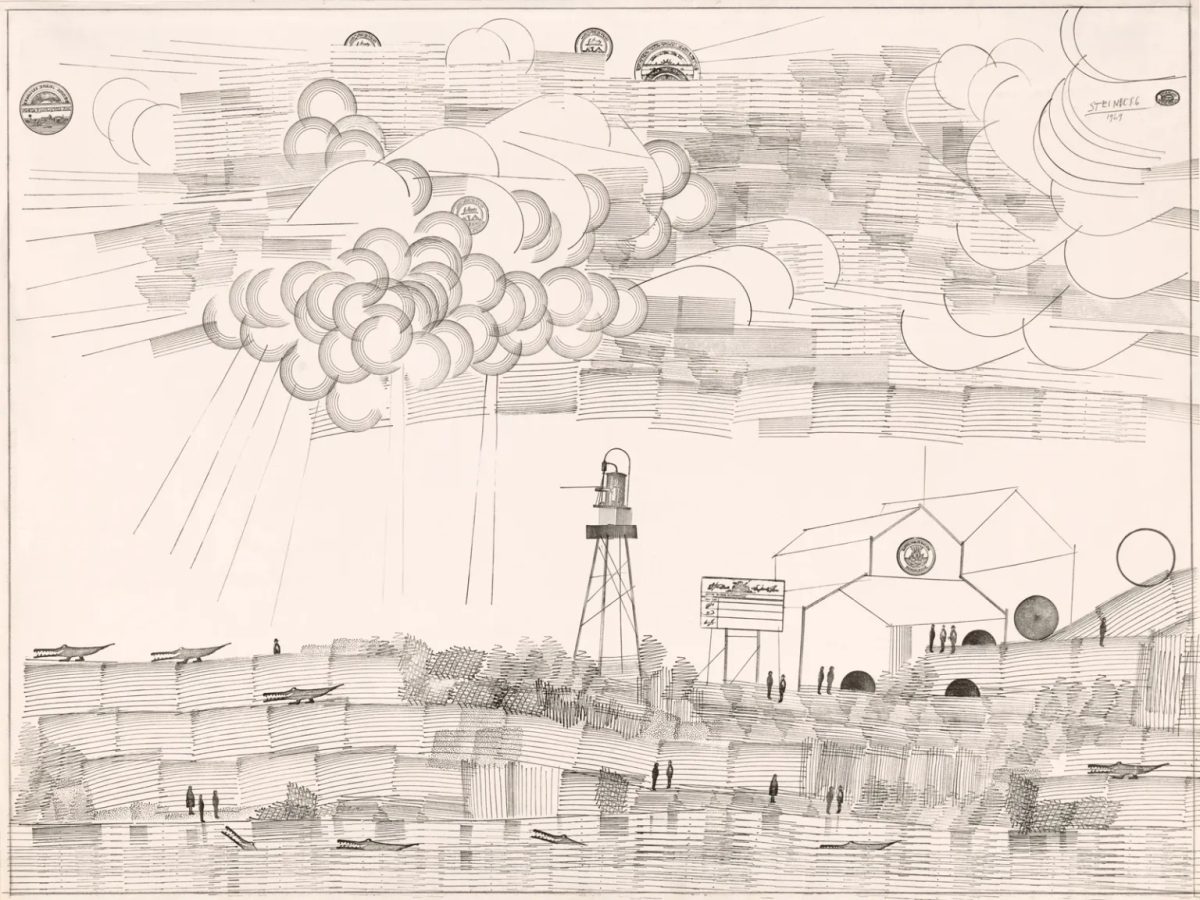
Saul Steinberg- Riverfront, 1969
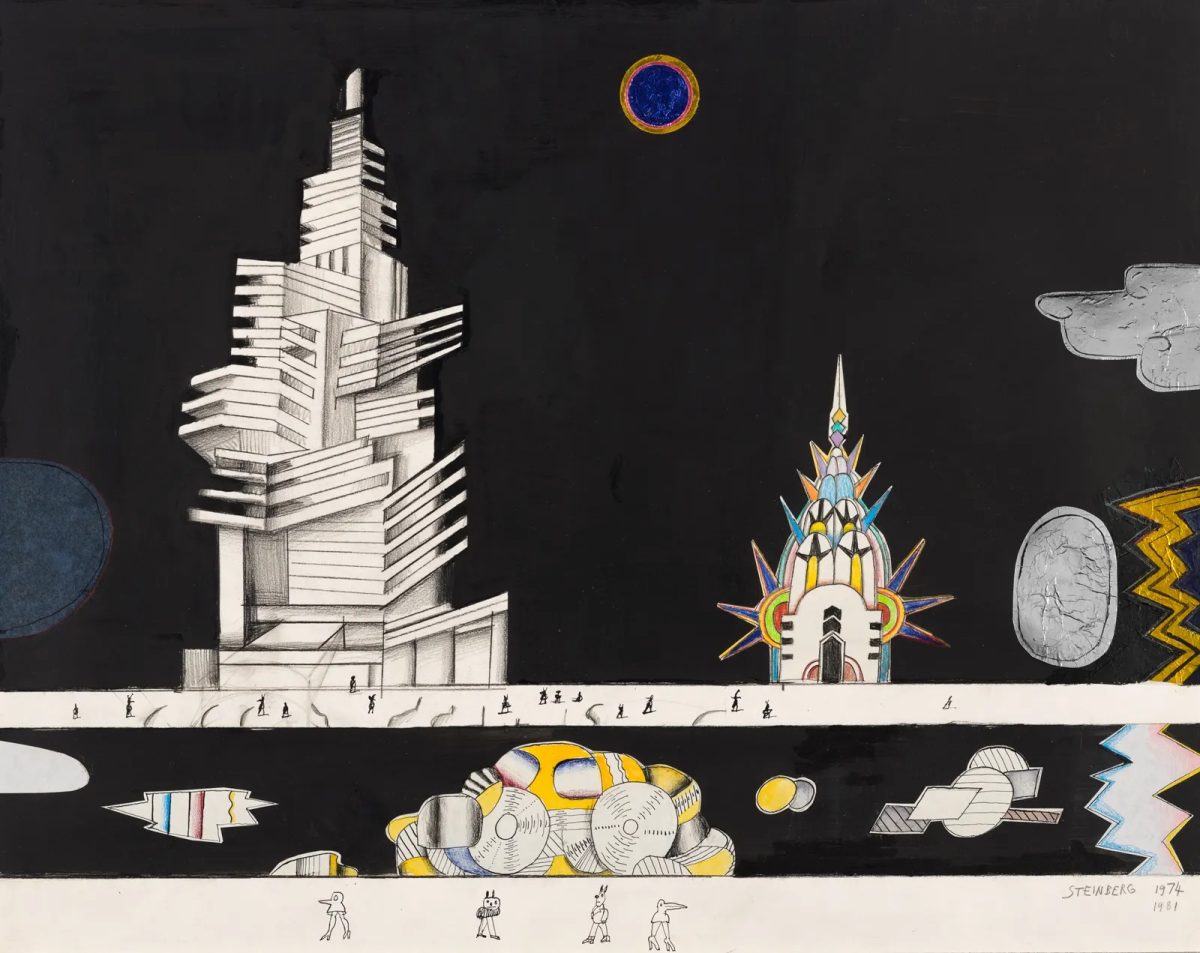
Moonlight by Saul Steinberg
More Saul Steinberg on the site.
Would you like to support Flashbak?
Please consider making a donation to our site. We don't want to rely on ads to bring you the best of visual culture. You can also support us by signing up to our Mailing List. And you can also follow us on Facebook, Instagram and Twitter. For great art and culture delivered to your door, visit our shop.

